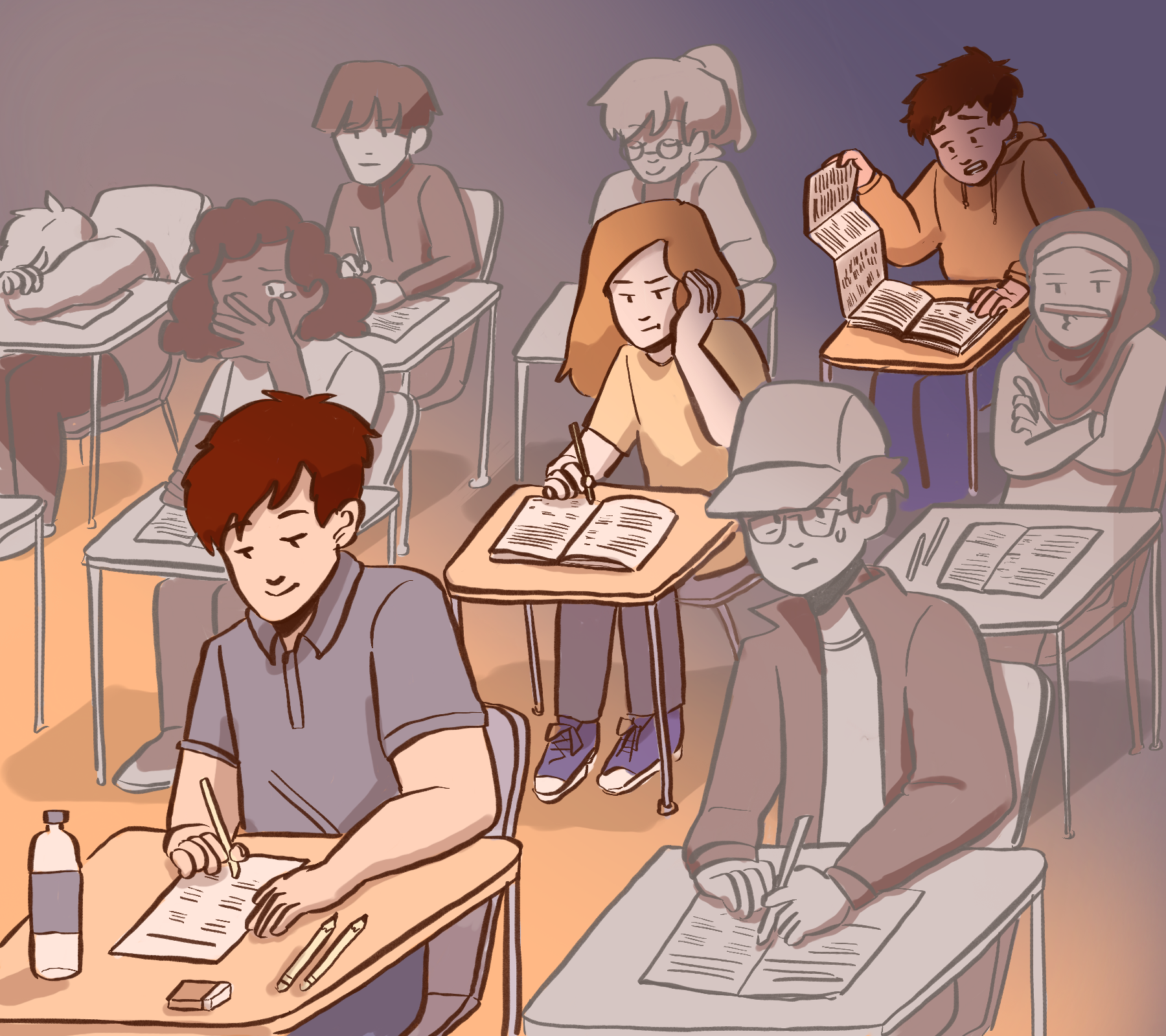Standardized testing fails to reflect holistic achievement of college applicants

(Claire Sun/Daily Bruin)
By Allison Oliva
March 5, 2019 10:41 p.m.
Applying to attend the country’s No. 1 public university doesn’t just mean being a student. Sometimes, it also entails beating a system meant to work against you.
The phrase of the day is standardized tests.
Standardized tests like the SAT are required of students all over the world hoping to be admitted to the University of California and UCLA. Since its start in 1926, the SAT has been used by universities to set standards of not just what is expected of applicants, but also to determine whether a student is ready for college.
But these tests offer a limited insight into students’ potentials. There are numerous financial barriers to taking tests like the SAT, including registration costs, fees associated with sending scores to universities and tuition for prep courses. Students coming from low-income homes often are unable to afford these expenses.
The UC is now, at the request of President Janet Napolitano, studying whether standardized testing is an accurate predictor of success in college.
But we already know what the results will be.
Standardized tests perpetuate systemic inequity in the application process. In order to make sure students are able to do their best at campuses like UCLA, the UC should end the use of standardized tests and rely on applicants’ grades, extracurriculars and personal statements for admission.
The SAT has a long history of being exclusive. Carl Brigham, the psychologist who invented the SAT, created the test in hopes of excluding Jewish students and black students from attaining higher education. Although standardized tests have evolved since then, they are still a barrier to higher education.
Reports from the 2018 SAT show that 59 percent of white students and 75 percent of Asian students achieved their benchmark score as compared to 21 percent of black students and 31 percent of Latino students. These benchmarks are meant to show whether a student is ready for college and indicate career readiness.
Pedro Noguera, a professor of education at the UCLA Graduate School of Education & Information Studies, said standardized tests have historically been problematic for students.
“Historically the idea of a standardized test was seen as a way to prevent bias. Standardized tests were seen as a way to get around nepotism,” Noguera said. “The problem is that the test is rooted in biases – not simply socioeconomic, but also ethnoracially.”
Preparing to take standardized tests isn’t cheap. And then there’s also the cost of tutors, practice tests and retaking the exam if students need to improve their score.
Moreover, the only thing the SAT is good at testing is students’ ability to take tests, not their readiness for college.
Noguera said there have been studies showing that high school grades are better predictors than standardized test scores of how students will do in college.
“The hard things to consider, (which) are really important, are the attributes of a student – the ability to recover when they have a setback,” Noguera said. “Students do not do well emotionally in college. They seem great on paper, but not in person.”
Standardized tests are a one-time event. There are many factors that can affect a student’s score. Four years’ worth of high school grades are a better indicator of how consistent students are and how well they challenge themselves on a daily basis. Personal statements allow students to discuss what they’ve struggled with and how they’ve come back from that.
The combination of high school GPAs and personal statements allows applicants to show their resilience in academics and life – something college students have to deal with.
Lily Barajas, a first-year political science student, said scores do not represent how hard a student is working in high school.
“A number is not (a representation) of who you are. Your story is,” Barajas said. “I’m worth more than a score.”
Tests like the SAT and ACT, in plain terms, show that you can fill out bubbles and put words in an essay that will please graders. This can result in students feeling they are inadequate when, in reality, they posses qualities that make them a good fit for college.
Amy Bueno, a first-year Italian studies student, said she saw her peers compare themselves to each other after SAT scores came out.
“I noticed a lot of people comparing their scores and it was sad that they only compared themselves to those who got higher scores,” Bueno said.
Moreover, despite getting outstanding scores on the SAT or ACT, students might not do well in college because of the variety of topics that aren’t covered on the tests.
And that’s the point: Standardized tests don’t capture the entirety of an applicant. Looking at a student’s achievements, like how they did extracurriculars while still maintaining good grades, shows their depth better than a good score on a three-hour test.
Certainly, the UC can justify its use of standardized test scores by stating it looks at students holistically. But the disparity of students on campus is apparent: Three percent of current UCLA students are African American and 22 percent are Hispanic, despite that being inconsistent with California’s demographics.
It’s clear barriers like standardized testing are inhibiting marginalized communities. So long as they are part of the admissions process, applicants will continue having their identities tied to arbitrary numbers.
And for those without resources, the odds will still be stacked against them.


